In this article, we will learn How to Install Symantec Endpoint Protection in Linux. We are going to perform this SEP client installation on CentOS. Although we can use these steps on RHEL and Fedora as well.
We will install Symantec Endpoint Protection 14.3 in CentOS 8. CentOS is a Linux distribution that provides a free, community-supported computing platform functionally compatible with its upstream source, Red Hat Enterprise Linux.
Pre-requisite check before installing SEP in Linux
- Before the installation, it is recommended to check the Supported Linux kernels for Endpoint Protection 14.x.
- Export the SEP rpm client from SEPM Manager.
- Install the kernel headers and devel.
- Install dependencies.
Find Linux OS version
Run the following command to find the Linux OS version.
cat /etc/os-release
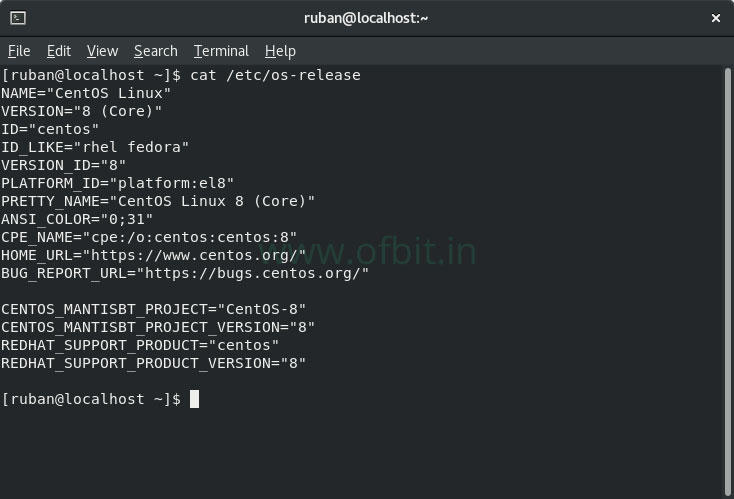
Find Linux OS Kernel version
Run the following command to find the Linux OS Kernel version.
uname -r
Find and install kernel headers and devels
Run the following command to find the Linux OS kernel headers and devels installed.
rpm -qa |grep kernel

If you find the kernel headers and devel are not installed, or multiple headers and devel present, make sure you install the same version. Run the below command to install kernel headers and devel.
sudo yum install kernel-headers

sudo yum install kernel-devel
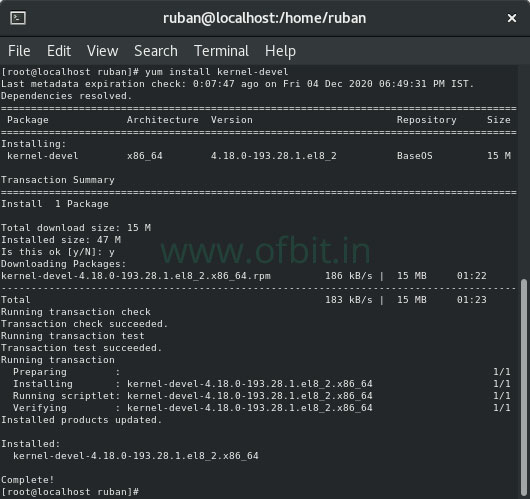
Install Dependencies before Install Symantec Endpoint Protection in Linux
Now we will install the 32-bit libraries. Run the below commands to install the dependencies.
sudo yum install glibc.i686
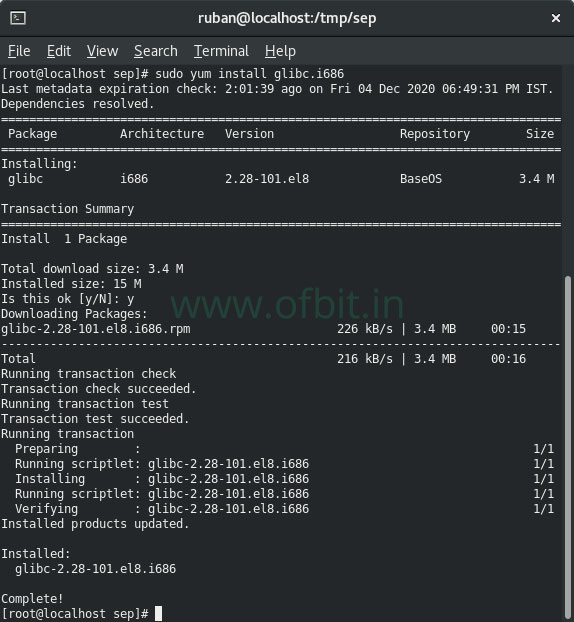
sudo yum install libgcc.i686
sudo yum install gcc
If you are only using the CLI, you do not need to run this command. This command is required if you are using a GUI.
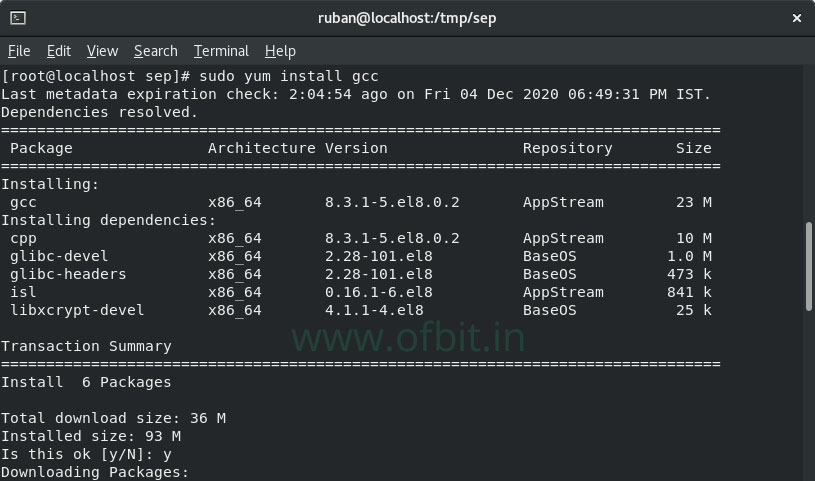
sudo yum install libX11.i686
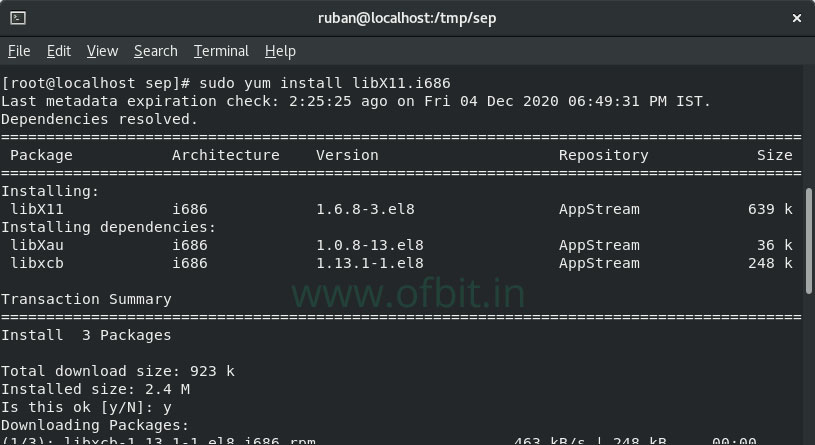
Copy and Extract Installer to Linux System
Before Install Symantec Endpoint Protection in Linux, copy the installer to the system which we have extracted from the SEPM manager.
Here we recommend copying the SEP installer to /tmp to avoid permission issues. Although you can copy the SEP installer to any folder you wish.
If you copied the zip file, run the below command to extract it. Here we named the extracted folder as sep.
sudo unzip -d sep FileName.zip
Change File Permission
We assume you copied the SEP installation folder in /tmp. Run the cd /tmp/sep to change the directory.
Use command ls -l to check if the install.sh and pkg.sig has R+W+X permission. If not, run the below command to grant the permission.
sudo chmod 777 install.sh pkg.sig
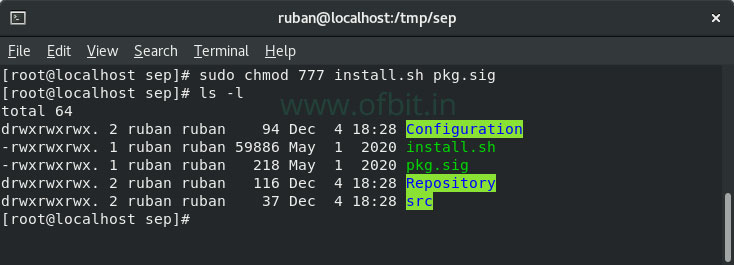
Install Symantec Endpoint Protection in Linux
So, we are ready to install Symantec Endpoint Protection in Linux. We have installed and configured all the prerequisites, copied the SEP rpm package, and granted the RWX permission. Now let’s start with the Installation steps.
Step 1: Run the installer install.sh with -i argument.
sudo ./install.sh -i
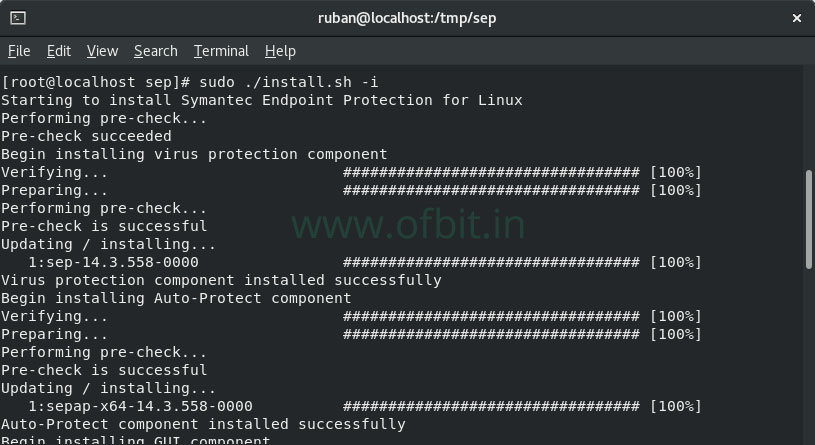
Step 2: Verify the SEP installation
Once installation is completed, the command prompt returns the successful prompt and services will automatically start. Now run the below command to navigate to by default SEP installation directory.
cd /opt/Symantec/symantec_antivirus
Now run the below command to check the installed SEP version.
./sav info -p

Step 3: Verify the communication status between SEP client and SEPM
To verify the connection status between the Linux system and the SEPM server run the below command.
./sav manage -s
Now reboot your system to complete all the installation changes made during the SEP installation in Linux OS.
Well, we have successfully Install Symantec Endpoint Protection in Linux. You might get some errors in case of a mismatch between the supported Linux kernel and SEP version. We strongly recommend you to log a case with Symantec for such an error.
See more how-to articles on Symantec.

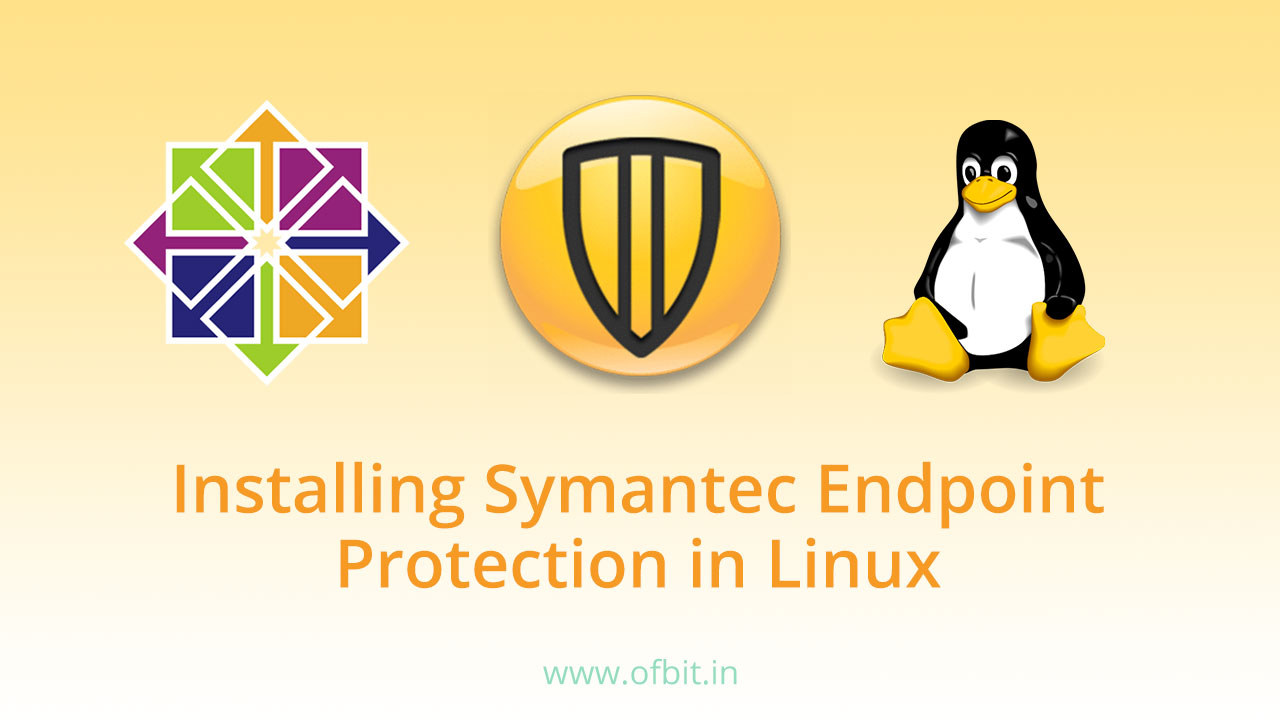
[…] How to Install Symantec Endpoint Protection in Linux (with Screenshot). […]